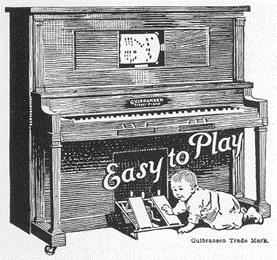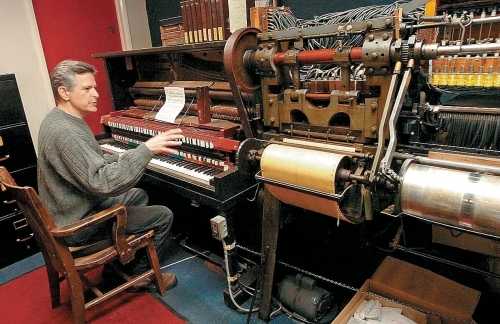Most of the following articles and information are also available in printed form
Buying a piano
How do you go about deciding which is the best piano for you? First, keep in mind that you will be listening to, and looking at, your piano for a long time. The average lifetime of a piano is about 40 years (although there are many still going that are much older) and you will probably have it long after you have sold your present furniture and car. Pianos depreciate very little. A used piano built 10 years ago and well maintained can cost almost as much as a comparable new piano. So buy the best piano you can afford. Try to resist the temptation to economise on a piano for a child who s starting lessons. Making good music on a quality instrument, tuned regularly and to the correct pitch is the best way to keep a youngpianist interested.
Which type of piano is for you?
Almost since the first piano was built, manufacturers have been trying to make it smaller. This has been no easy task, because good tone in a piano requires certain minimums in length of string and size of soundboard. The size of the original grand piano was initially reduced by the use of stronger frames and an innovative use of cross-stringing, then, in the late 1800s, the space-saving upright or vertical piano was developed. This was so successful, that today, some larger high quality uprights can have equal or better tone quality than many small grands. Eventually, even the upright was shortened and in some cases, ingenious scale design compensates in tone for the loss of size. However, in general, the larger the piano the better the tone.
How much is it worth?
The value of a piano depends very much on how knowledgeable the seller and the potential buyers are. For every piano there is what is regarded as an informed value and an ignorant value . The informed value takes into account the technical quality, whereas the ignorant value does not, being based primarily on how the piano case looks (even if that). Unfortunately the ignorant value is often what the piano sells for. Ultimately something is worth only as much assomeone is prepared to pay for it.
But it is an Antique!
The question is often asked if the piano is valuable because it is an antique . The answer in most cases is no. Unlike say, a Chippendale writing desk or a Tiffany lamp, an old piano is usually just that, an old piano. While restoring a fine piece of furniture usually involves a craftsman restoring the finish, this would only be a starting point with a piano. The piano is a complicated mechanical marvel involving thousands of moving parts, all of which are subject to wear and deterioration. Restoring these many parts to their original condition is a major undertaking, requiring many hours of labour. And even this is sometimes not possible due to the lack of available replacement parts.
Get the Tuner.
Although it is possible to find a piano built over 60 years ago that is still in reasonable playing condition, it is recommended enlisting the opinion of a piano tuner/technician before investing in one and the price should reflect that it is an old piano. The period from 1900 to 1930 was the heyday of piano manufacturing, during which many fine pianos were being built. A piano from this period that has been well maintained, or is in restorable condition, might be a good purchase, but have piano tuner check it out before you invest your money.
Much of the information is from The Piano Book by Larry Fine, with a few additions from yours truly. B.H.
PIANOLAS - THE END OF AN ERA

Remember the monstrous old pianos that were found in community halls or maybe in the home of your parents or grandparents. Chances are, it was a pianola or player piano. You opened a little cupboard door in the front panel of the piano and inserted a perforated paper music roll about the size of a rolling pin - rather like putting a film into an old box camera. By frantically working the foot pedals at the bottom of the piano which were connected to a set of bellows and a motor mechanism, the roll would turn and music would play.
The roll would pass over a tracker bar that had a row of holes which lined up with the perforations in the paper. Each roll was “programmed” with a combination of holes that would produce a specific tune. Thousands of these rolls still exist in homes all over the world, but because of decreasing demand and new technology, the most famous and largest piano roll manufacturer, QRS Music has ceased production.
After more than a hundred years producing the rolls for player pianos, the company discontinued its manufacturing of the rolls on December 31st, 2008 and is now focusing on digitized, computerized player pianos running from CD. “We’re still doing what we always did, which is to provide software for pianos that play themselves. It’s just the technology that has changed…” The first piano rolls were used around 1883 and were in continuous production from 1896 up until last year. QRS Music has been the only producer for over a decade and has a total of 5,000 master recordings and 45,000 total rolls - ranging from live recordings by Liberace to piano renditions of Elvis.

Picture shows the QRS Marking Piano, a boxlike device invented in 1912 that enabled a master roll to be recorded of a live performance.
It was designated a National Historical Engineering Landmark by the American Society of Mechanical Engineers in 1992.

The last scroll to roll off the line was “Spring is Here,” by Rodgers and Hart, recorded by Buffalo-based pianist Michael T. Jones. Indeed – the end of an era!